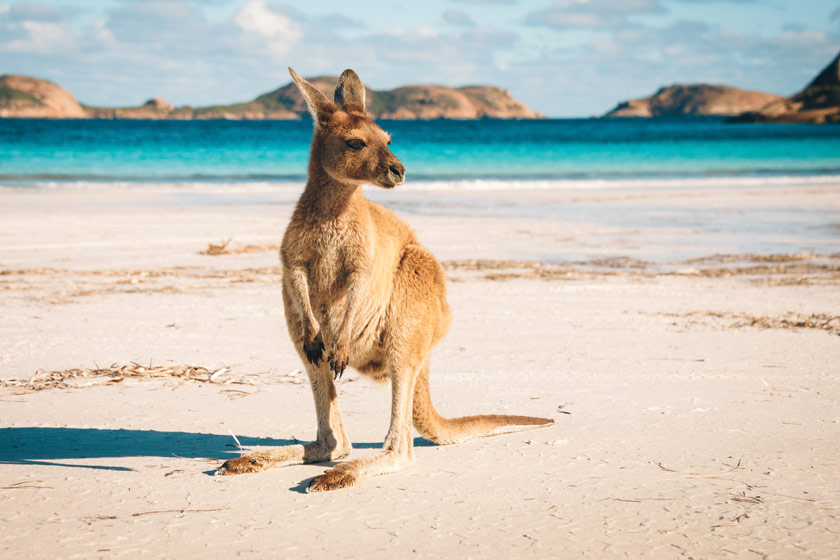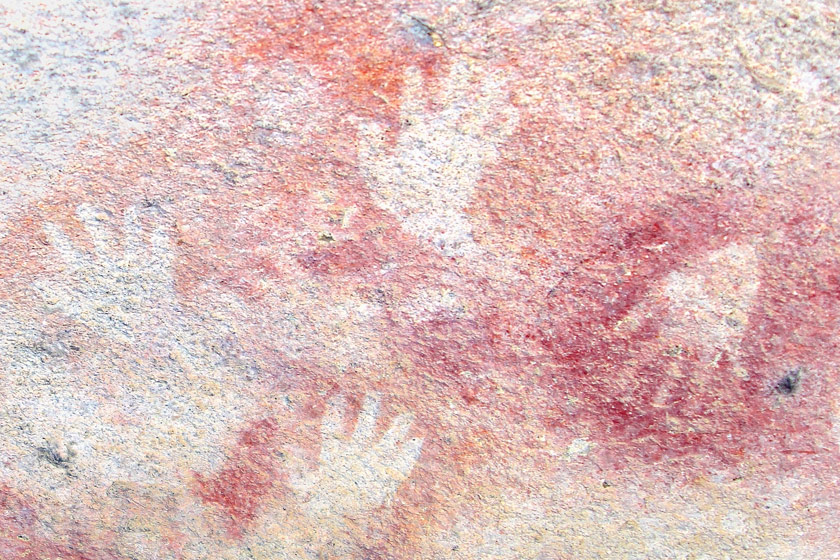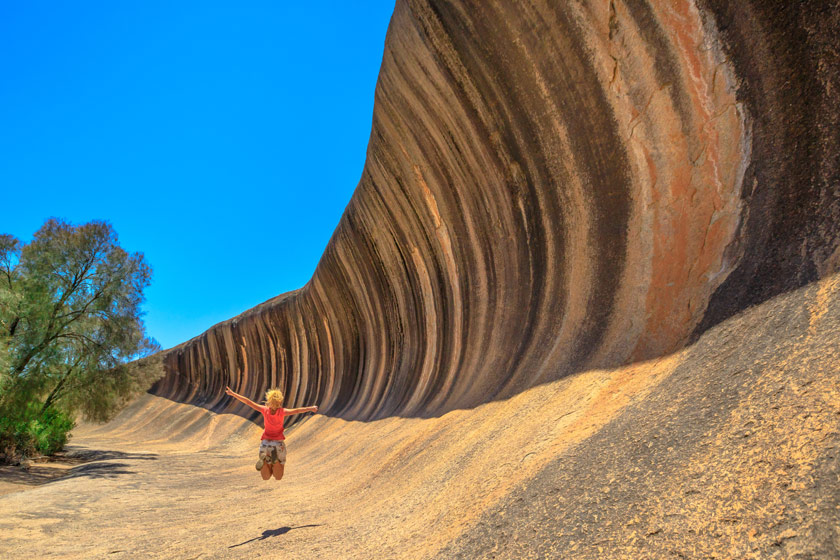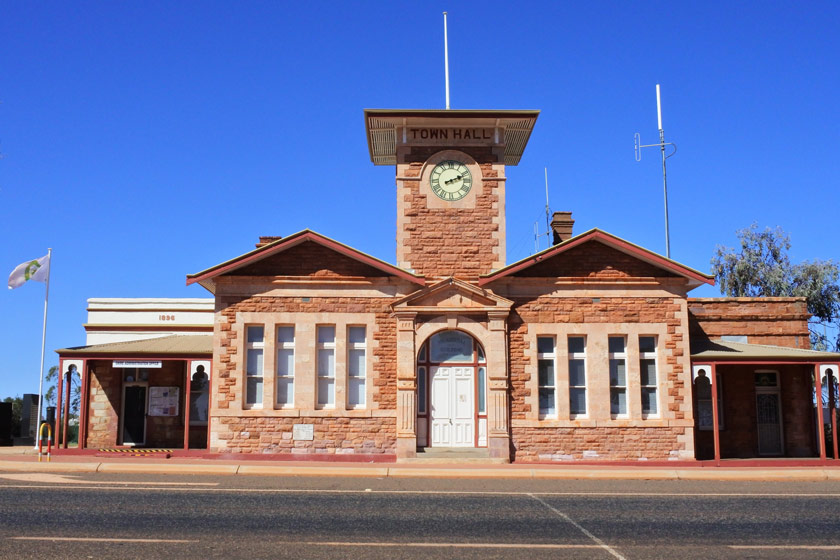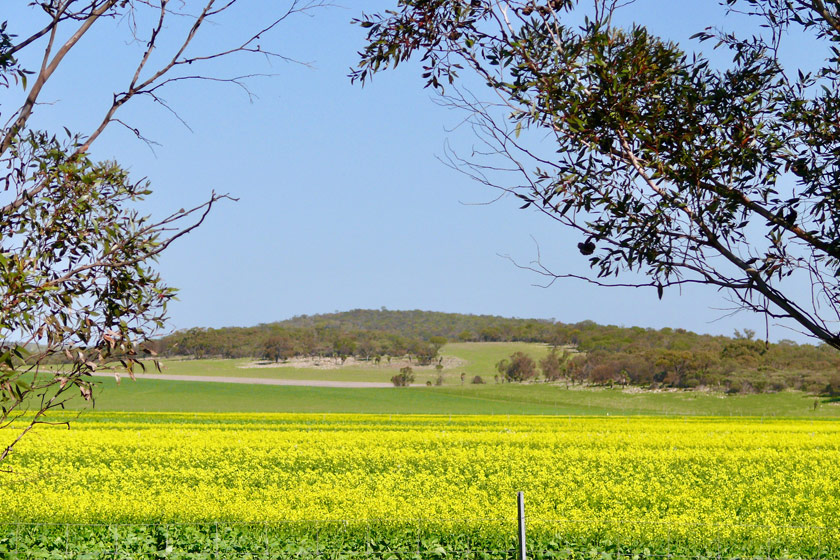Esperance & The Golden Outback, WA
The Golden Outback of Australia is a popular tourist destination thanks to its abundance of unique outback experiences, adventurous road excursions, and relaxing vacation spots.
Outback plains, vast deserts and salt lakes, steep rocky outcrops, wild woods, and some of the world’s whitest beaches make up the natural scenery. When spring arrives in Western Australia, the beautiful landscape is transformed by a rainbow of blooming wildflowers.
In the landscape of Esperance, the vibrant tones are consistent. The beaches of Lucky Bay are some of the whitest you’ll ever see, and you can even spot kangaroos lounging on them. Lake Hillier, in the Recherche Archipelago, is a candy-apple pink, providing a striking visual contrast to the Indian Ocean’s deep blue.
Explore Western Australia’s Golden Outback
Taking the Brookton Highway eastward from Perth, you’ll arrive in Hyden around four hours later. It’s a popular stopping point for the over one hundred thousand people who visit each year on their route to see Wave Rock. Mulka’s Cave and Hippo’s Yawn are two further local natural landmarks.
The Aboriginal artwork in Mulka’s Cave is among the most impressive that can be discovered in southwest Australia. The name Mulka originates from a local Aboriginal myth tied with the cave. Mulka was the illegitimate offspring of a woman who had broken the law by marrying a man with whom she had banned romantic relations.
There have been numerous discoveries of stone tools that the indigenous people of this region utilized, and some of the hand prints painted on stones at the Humps may still be seen today. Hyden offers a variety of lodging options, including chic motels, charming cottages, and a campground with RV and camping sites.
An hour’s flight east from Perth, Kalgoorlie is the hub of the goldfields and one of Western Australia’s largest cities. Still active as a mining town, Kalgoorlie’s wide streets and grand old buildings are full of people living the prospecting dream.
Wave Rock
Wave Rock is located on a 160-hectare nature reserve only four kilometres east of Hyden. The Rock is an impressively sculpted granite cliff, 15 meters high and 110 meters long. For 2.7 billion years, water, weather, and chemical erosion are thought to have sculpted and coloured the initial granite structure, giving it a wave-like appearance.
Wind and precipitation have weathered Wave Rock, a granite inselberg, throughout millions of years. The ochre, red, deep grey, and sandy-striped wave witnessed today is the result of these erosional forces gradually sweeping the Rock. Minerals having washed down the stone are what give it the beautiful colours of wave rock.
Menzies
One hour and a half is all it takes to drive north from Kalgoorlie to Menzies. There are frequent day trips from Kalgoorlie to the Antony Gormley sculptures and Lake Ballard, located 55 kilometres northwest.
The historic gold mine village of Menzies is the entry to the biggest and best gallery in the universe with one of the art world’s most unique shows, ‘Inside Australia.’ The town’s population doubled and then halved within a decade; however, you can still run into the occasional gold prospector or fossicker who has come to town in quest of their fortune. You’ll have to get a permit to go there and hang out with them.
The beautiful Grand gold rush buildings, such as the Menzies Hall, infamous for being “clockless” for a hundred years, reflect the city’s former greatness. They believe the ship transporting the original clock from England wrecked off Rottnest Island, taking it with it.
Bencubbin
In the region’s heart, three hour’s journey northeast of Perth is Bencubbin. The region had sandalwood cutters as earlier as the 1860s, and a sheep unit was started in the same year. In 1908, the first piece of farmland was purchased.
Although a few farmers have branched into raising cattle and pigs, the area is mainly used to grow coarse grains, sheep, and wheat. The station country and wheat borders are where Bencubbin is located. This helps explain the incredible range of lovely flora and wildlife seen throughout the county.
The spectacular wildflower season runs from June to October, and there are plenty of birds all year. There are numerous unique areas of interest, and they are all accessible via good highways.
Moora
On the Moore River’s shores, Moora is about two hours north of Perth. Historically, a wheat and sheep farming town has cultivated cattle, wildflowers, and other cereals in recent years. The town is a hub for several other coastal settlements, including Jurien, Cervantes, and Lancelin.
Travellers on the beautiful wildflower route who are headed north frequently stop in Moora. Look for large amounts of blue Dampiera and Wattle in the winter and early spring. As summer draws near, the hues shift to white and pink feather flowers, orange Eremaeas, and yellow Kangaroo Paws.
Where to stay?
Esperance & The Golden Outback Destinations
- Ardath
- Baandee
- Babakin
- Badgingarra
- Badjaling
- Balkuling
- Ballaying
- Ballidu
- Beacon
- Beenong
- Bencubbin
- Bilbarin
- Bindi Bindi
- Bodallin
- Bonnie Rock
- Boodarockin
- Boulder
- Boundain
- Bowgada
- Bremer Bay
- Broadwood
- Brown Hill
- Bruce Rock
- Bullaring
- Bullfinch
- Bulong
- Bulyee
- Buniche
- Burakin
- Burracoppin
- Cadoux
- Cancanning
- Carrabin
- Cataby
- Cervantes
- Commodine
- Contine
- Coolgardie
- Coomberdale
- Corrigin
- Cowcowing
- Cuballing
- Cue
- Cunderdin
- Dalwallinu
- Dandaragan
- Dangin
- Doodlakine
- Dowerin
- Dryandra
- Dudinin
- Dukin
- Emu Hill
- Fimiston
- Forrest
- Gabalong
- Gabbin
- Gairdner
- Gascoyne Junction
- Ghooli
- Goomalling
- Goomarin
- Gorge Rock
- Hannans
- Harrismith
- Highbury
- Hindmarsh
- Hines Hill
- Holleton
- Holt Rock
- Hyden
- Jerramungup
- Jibberding
- Jitarning
- Jurien Bay
- Kalgoorlie
- Kanowna
- Karlgarin
- Karloning
- Kellerberrin
- Kondinin
- Kondut
- Koojan
- Kookynie
- Koolanooka
- Koomberkine
- Koorda
- Korbel
- Kulin
- Kulja
- Kumarina
- Kununoppin
- Kurnalpi
- Kwelkan
- Kwolyin
- Lake Biddy
- Lake Brown
- Lake Camm
- Lake Grace
- Lake King
- Lakewood
- Lamington
- Latham
- Laverton
- Leinster
- Leonora
- Lime Lake
- Marvel Loch
- Maya
- Meckering
- Meekatharra
- Menzies
- Merkanooka
- Merredin
- Miling
- Moora
- Morawa
- Mount Magnet
- Mukinbudin
- Mullingar
- Murchison
- Nambung
- Narembeen
- Narrogin
- Needilup
- Nungarin
- Ora Banda
- Parkeston
- Paynes Find
- Paynesville
- Perenjori
- Piccadilly
- Pingelly
- Pintharuka
- Pithara
- Quairading
- Reedy
- Regans Ford
- Sandstone
- Somerville
- Southern Cross
- Tammin
- The Pinnacles
- Trayning
- Ularring
- Wagin
- Walebing
- Watheroo
- Westonia
- Wickepin
- Widgiemooltha
- Williams
- Wiluna
- Wongan Hills
- Wubin
- Wyalkatchem
- Xantippe
- Yalgoo
- Zanthus
Experiences
- Active
- Caravan and Camping
- Rural/Country
- Cultural
- Historic/Heritage
- Nature based
- Remote
- Self-Drive
Popular Activities
- Off Road Driving
- Scenic Flight
- Sightseeing
- Wilderness
- Wildlife
- Outback
- Beach
- Fossicking
- Caravan and Camping
- Sandboarding
- Food and Wine
About Esperance & The Golden Outback
- Locality: Urban locality
- Esperance & The Golden Outback Postcode: 6450
- State: Western Australia
- Region: Esperance & the Golden Outback
- Latitude: -33.86129
- Longitude: 121.89143
- Elevation: 10m
- Population: 2144
- Median Income: $30732
- Area (Sq/km): 2.508
- Timezone: Australia/Perth

